On my recent March trip to Texas I took the opportunity to tour the Battleship Texas. She is anchored at San Jacinto State Park, the first US battleship to become a permanent museum ship, and the first battleship declared to be a US National Historic Landmark. I will tell the story of this great battleship using the informational signs placed on deck.
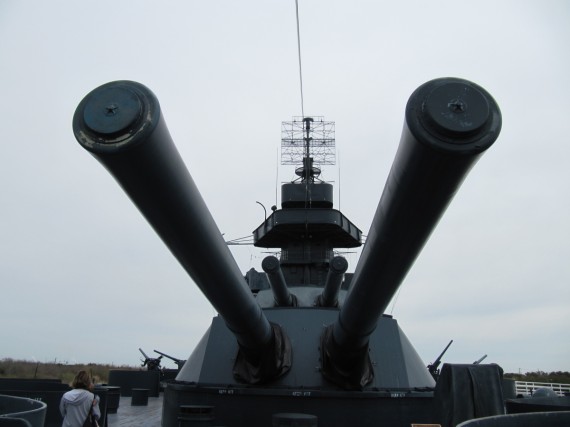
No. 1 and No. 2 turrets have four of the ten 14-inch 45 caliber guns, which fired 1,400 lb armor piercing shells
Built during the period of arms escalation in the early 20th century, the Texas was briefly the most powerful battleship in the world. She was designed around her massive 10-gun main battery which was capable of firing 7 tons of 14″ shells at targets 12 miles away. This concentration of offensive firepower in the big guns distinguished the Texas as a dreadnought, a ship fearing none other at sea.
Launched in 1912 at Newport News, Virginia, the USS Texas marked the beginning of the American rise to world-power status in the early 20th century. Texas survived as a warship because of the 1922 arms limitation agreement. By treaty, no new ships could be built; thus, the Texas was sent to drydock to be modernized and refitted. Improvements included new torpedo protection, new oil-fired boilers to replace those fueled by coal and additional armor plating and anti-aircraft weapons.
The Texas was equipped to defend herself against destroyers and torpedo boats, which moved too close and too fast for the big guns of her main battery. This secondary battery consisted of sixteen 5-inch 51 caliber guns (originally 21 guns) that fired 50 lb. projectiles, eight to ten per minute, with a range of eight miles. Six of the guns were mounted in an “aircastle” on the main deck.
The defense from the air attack had become far more vital by the onset of World War II. By 1945 the Texas was equipped with these anti-aircraft guns: ten 3-inch 50-caliber guns, ten 40mm four-gun (quad) mounts and forty four 20mm guns.
During World War II, Battleship Texas’ crew grew to more than 1,800 men. The ship had to provide for each of these men’s basic needs, including haircuts and visits to the dentist. There was a canteen, soda fountain, library, dispensary, and post office.
Diagonal armor raised the protection above the second deck to enclose the conning tower trunk, the boiler uptakes, and part of the secondary battery. Barbettes and a conning tower with 12″ armor rose above the main deck. “Non-essential” spaces — crew and officer’s berthing, gallery, and sick bay, for example — were left vulnerable to a direct hit.
The purpose of a battleship was to float her big guns into action against an enemy and to keep them floating and firing. The ten, 14-inch diameter guns of the Texas’ main battery were her reason for being. A full broadside could be fired every minute and a half. These guns made the Texas the powerful weapon in the world in 1914 and a serious threat thirty years later.
Shells and 105 lb. silk bags of powder were stored in magazines below armored decks. For loading each gun, a shell and four powder magazines were passed into the handling rooms and hoisted up the armored barbettes into the turrets.
The 14-inch guns were directed from fire control stations atop the foremast and in the tower aft of the stack. Here, the bearing of the target was observed and the distance estimated with firing finders. With the help of spotter aircraft watching the splashes as the shells hit the water, fire controllers could correct the range after each shot.
Ballistic calculations — for speed and direction of target and ship, wind direction and other factors — were made in the plotting room deep inside the ship. During World War II, radar and a Combat Information Center in the foremast were added.
In the event of battle damage to the fire control systems, the guns could be fired by local control. The turrets could even be rotated and the guns elevated by hand if the electrical power were knocked out.
To see this battleship was one of the highlights of my trip to Texas. I recommend that you pay her a visit when you are in the area. Here are a few more photographs of Battleship Texas.
Can you see Jill, Sarah, and Bryson in the photograph above? One of my favorite photographs is the one below that shows a gun protruding from what seems like every square inch of Battleship Texas.

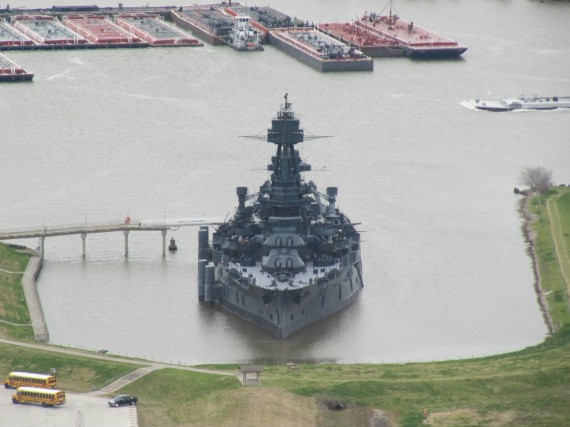

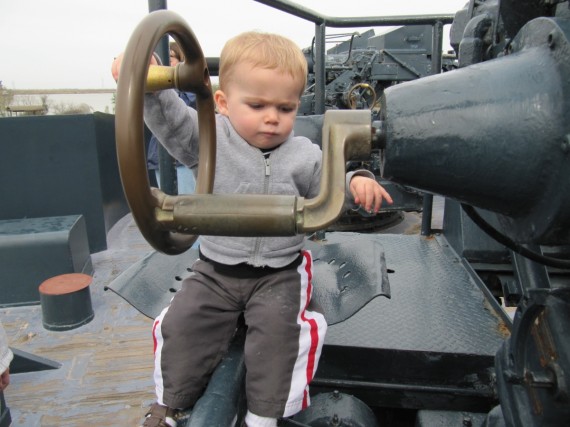
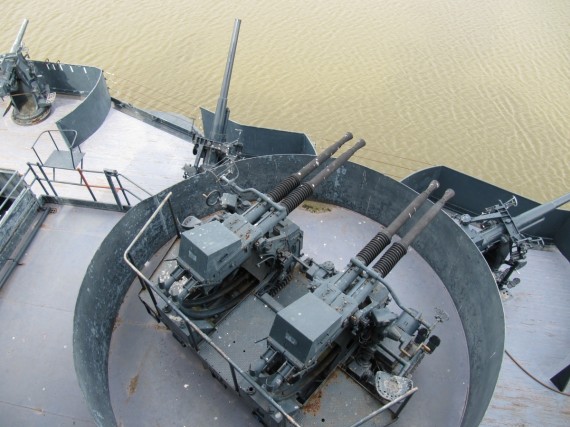
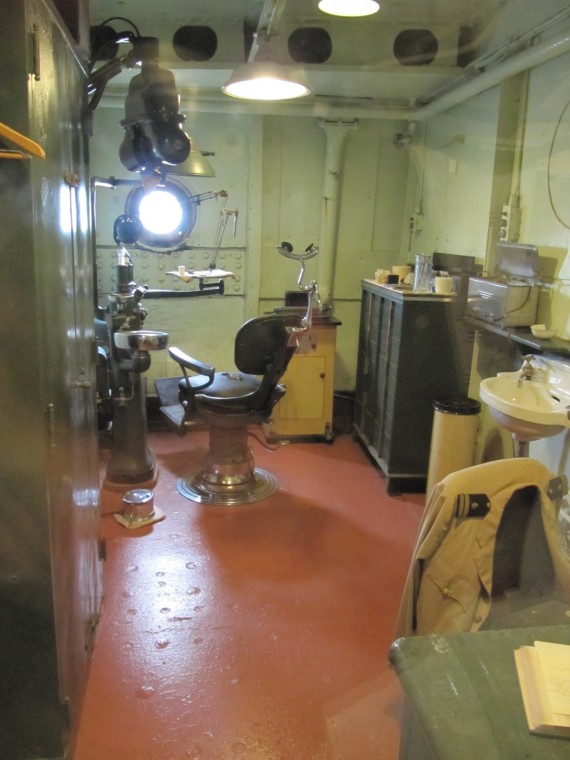
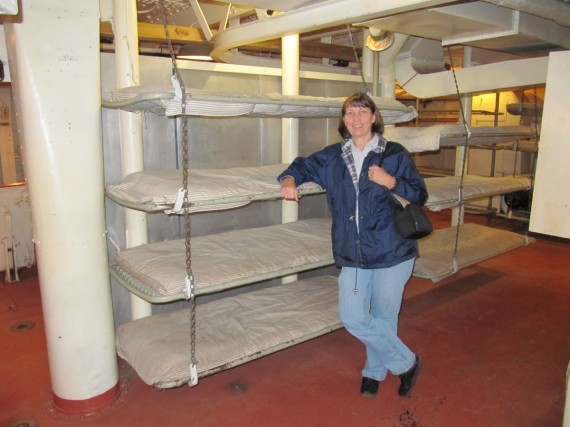
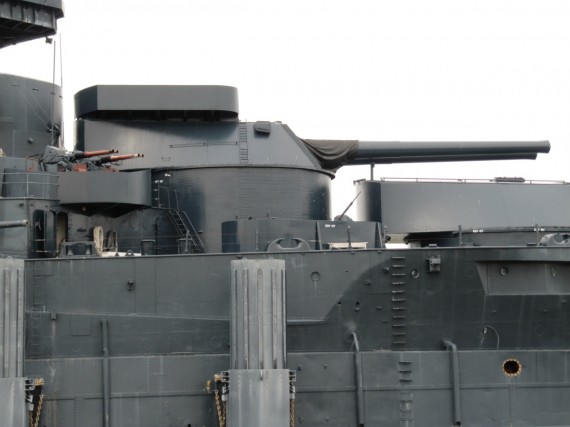
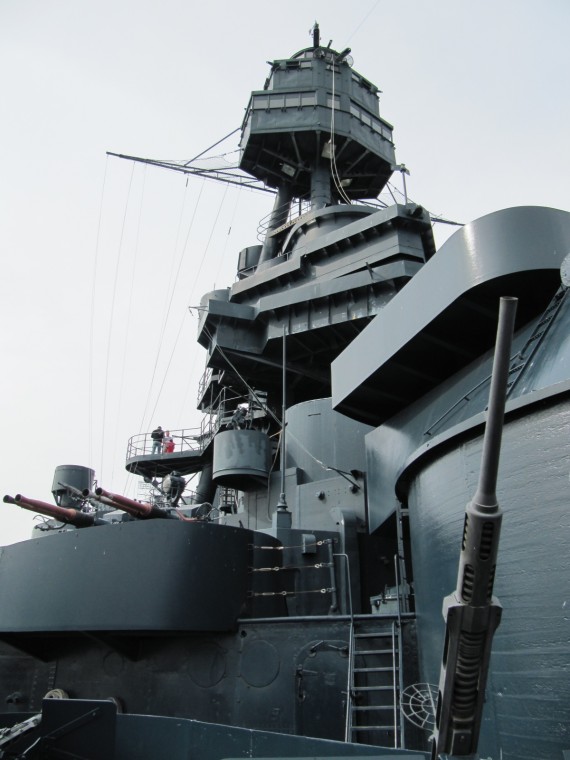
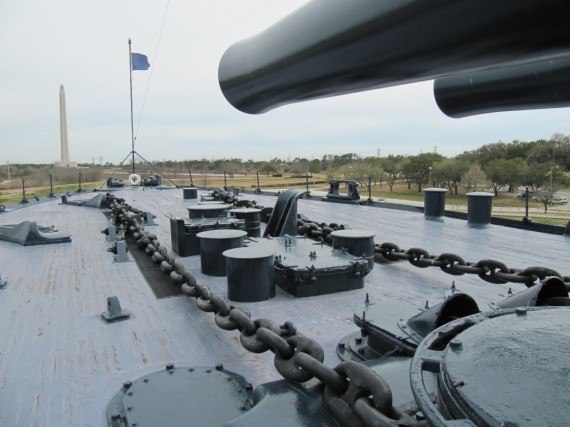
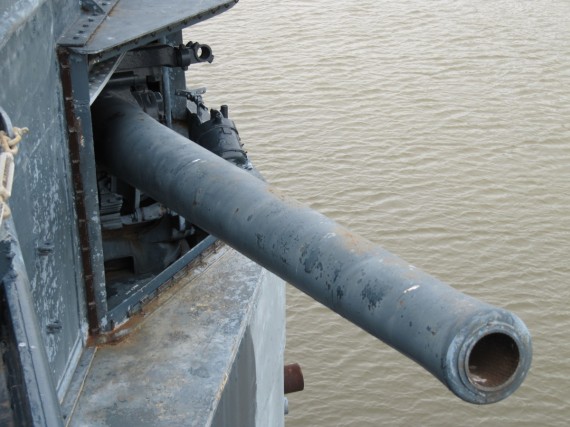
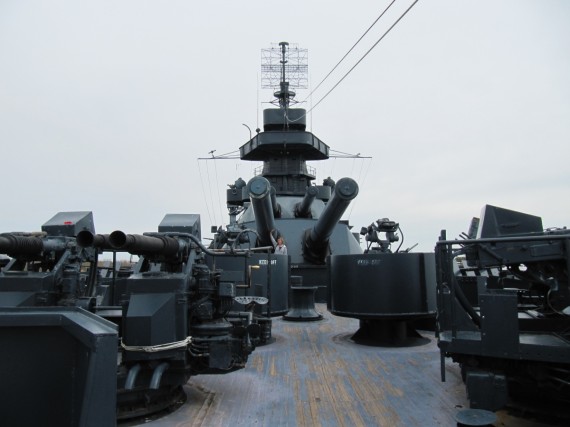
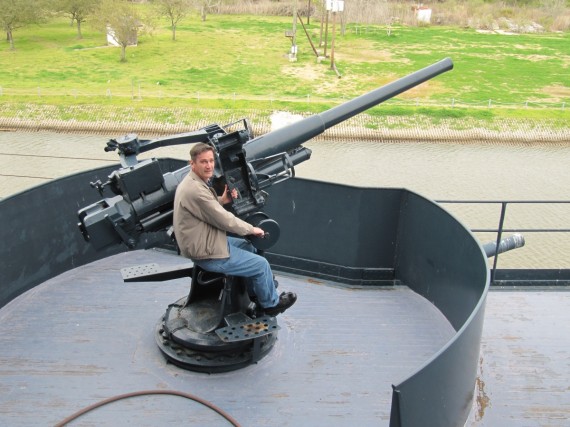
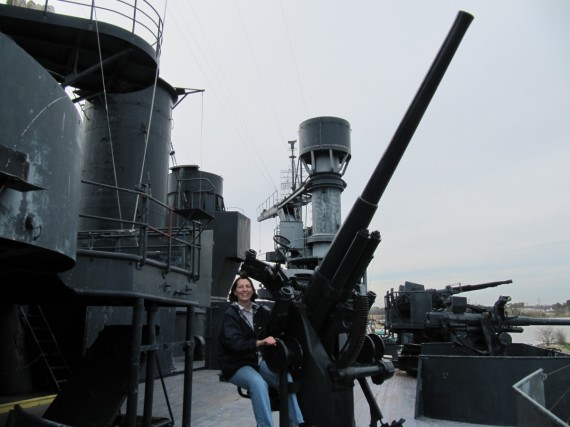
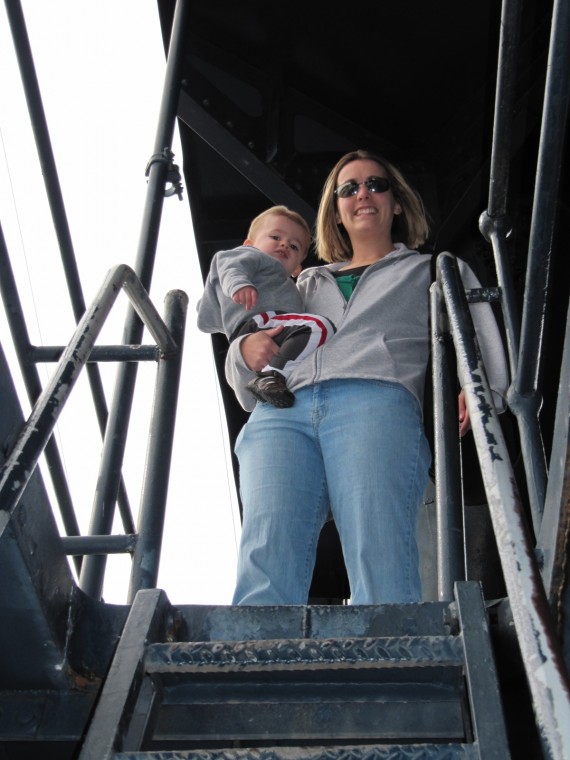
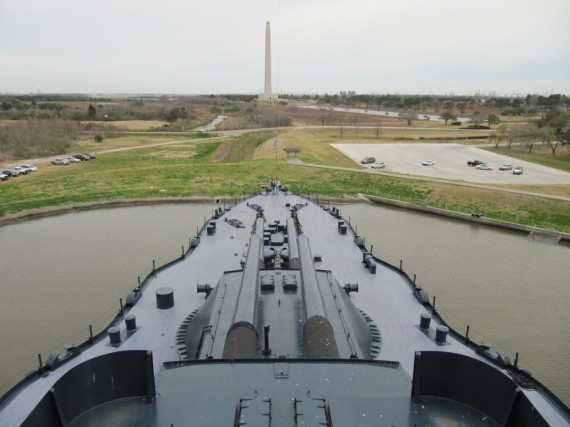

WOW!! Id like to fire one of those cannons. LOL!!!
Holy cow that is awesome!First time I’ve ever seen a battleship up close like that. Is it a tour type of thing or were you aloud to sort of “roam around”?
There really are guns and cannons everywhere, that’s insane. Everywhere I look on the external pictures there’s a gun or a cannon. lol
No tour, you were able to roam around, below deck also. It is well worth a visit. You are right, all those guns were crazy. They appear bigger when you are actually there and not just looking at photographs.
My father was assigned to one of the 3″ anti-aircraft guns on the Texas in WWII. He is alive & well @ age 90!
@ fellow Anonymous, did you know there’s a huge event for the Centennial of TEXAS in March? http://www.battleshiptexas.org
My Father in Law served on the Texas in WW II. I spent many days on the ship as kid growing up in Tx. never knew would marry someone whose Father served on the ship. It is truly an amazing sight. Take the hard hat tour,,you get to go to compartments you cannot go to as a regular visitor or tourist, if you will. It is worth it. My Father in Law was in the 5th Division or the last 14″ turret towards the stern. To go below and see how it all worked is fantastic. Nice pictures.
My Grandfather served on the USS Texas during WWII. His name was Ron Smith. Does anyone know how I can find out more information on him?
A native Texan and a retiree of Newport News Shipbuilding where it was built, I love that old battleship, which I have visited several times. Another interesting tour is of the Iowa-class USS Wisconsin, which is moored at the excellent Nauticus maritime museum in Downtown Norfolk, VA. The USS North Carolina is also berthed at Wilmington. Nice to see that Texas seems from the photos to be well maintained – better than I recall from my last visit.
My Uncle, Luther Karnes, was an anti-aircraft gunner on the USS Texas during WWII. It is my hope that this ship will continue to be maintained in perpetuity.
I grew up In Jacinto City, which is about a half hour drive from the Battleship Texas and the site of the defeat of
Santa Ana and the Mexican army. My uncle would take be out there at least once a month to roam around the Battleship
and pretend to shoot down enemy airplanes. At that time the antiaircraft guns on the upper deck were movable. Not so much anymore. As a kid it was wonderful to stand in the presence of and play on a mighty battleship, not to mention the San Jacinto Monument and the hallowed ground that it sets upon.
As a grown up, twice I took Boy Scouts in our troop to do service projects on the ship. The first time they brought out
8-10 shells for the boys to clean up and repaint. The next time was for the 50th anniversery of BB-35. WE sspwnt an entire day down in the very bottom of the ship cleaning it up as much as possible (there was so much rust and dust floating around we could hardly breathe. It was well worth the effort to help clean up the ship. Many of the boys had never been there and they went away in awe of this mighty warship.